Chemistry Chair Mark Lautens has become the second Canadian to receive the E. C. Taylor Senior Award from the International Society of Heterocyclic Chemistry.
“Being recognized for what we make rather than how we make it was a very nice feeling,” said Lautens, whose research group focuses on making bioactive natural products and medicinally relevant structures using catalytic reactions. “Most people view our work as being primarily focused on catalysis--that is, making reactions happen faster, and finding new reaction pathways using metals as catalysts.”
“We identify new and efficient ways to make drugs and analogues—drug-like molecules—so that pharmaceutical researchers can explore how those molecules might be useful as medicines,” Lautens explained.
The E.C. Taylor Senior award has been presented biennially since 1981, with 21 previous recipients including distinguished organic chemists from Europe, Asia and North America. Professor Victor Snieckus of Queen’s University received the award in 2001, making him the first—and, until Lautens—the only Canadian to be selected.

Organic chemistry is the chemistry of carbon-based molecules, a group that includes familiar substances like methane, propane, and octane. Many of these organic molecules also contain other elements, such as oxygen, nitrogen and sulfur. It is when these additional elements form ring structures that they are called heterocycles... molecules that are among the most important of those used as pharmaceuticals.
“Most medications are made through a sequence of steps in a laboratory,” Lautens explained. “Our goal has been to find more efficient ways to make heterocycles as well as making heterocycles that have never been made, to explore their properties as potential medicines.”
Another group focus has been on reducing pharmaceutical waste. When producers use metal-catalyzed processes, reactions occur under milder conditions, and in fewer synthetic steps. That impacts how much waste is produced. “Less is more in the waste aspect of pharmaceutical synthesis,” Lautens said.
Lautens used reactions developed by his group to devise a simple and versatile route to Nintedanib, a drug previously developed by the pharmaceutical industry to treat idiopathic pulmonary fibrosis and non-small cell lung cancer. His group also devised a route to physostigmine, which was a known for the treatment of glaucoma. Other chemical reactions developed in his group led to the synthesis of molecules that have been tested in clinical trials to treat Alzheimer’s.
The International Society of Heterocyclic Chemistry named the award for Professor Edward C. Taylor, a chemist at Princeton who along with colleagues at Eli Lilly discovered the molecule known as Alimta™, which is used to treat pleural mesothelioma. It is a recognition of outstanding contributions to the field.
“I would not say we were selected based on one singular discovery,” Lautens said. “The group has developed many types of reactions over the years. Some researchers have taken heterocycles and used them to make more complex products. Others used very simple starting materials and rapidly created heterocycles.”
"My main contribution to the field has been using metals as catalysts in the reaction and synthesis of heterocyclic bioactive products.”
Professor Mark Taylor, Associate Chair of Graduate Studies, said inventiveness was also a factor in the selection: “The E.C. Taylor Senior Award recognizes Mark Lautens’s creativity and innovation in the synthesis of heterocycles.”
Looking beyond medicine, Taylor pointed out that heterocycles are also important in the manufacture of dyes and polymers. “Beginning in the early 2000s, the Lautens group showed that the Pd-catalyzed ‘Catellani reaction’ could be used to synthesize heterocycles, using tactics that have since been adopted by numerous research groups around the world.”
Using tandem reactions, in which a heterocycle is formed by constructing several bonds in sequence with the help of one or more metal catalysts, has been another broadly impactful contribution, said Taylor.
“Mark joins a list of highly distinguished scientists from North America, Asia and Europe to be recognized with this award,” he said. “This well-deserved honour celebrates his group’s sustained contributions to the advancement of heterocycle synthesis.”
Lautens will accept the award in Aveiro, Portugal, at the International Society of Heterocyclic Chemistry Congress on July 22-26, 2024.


